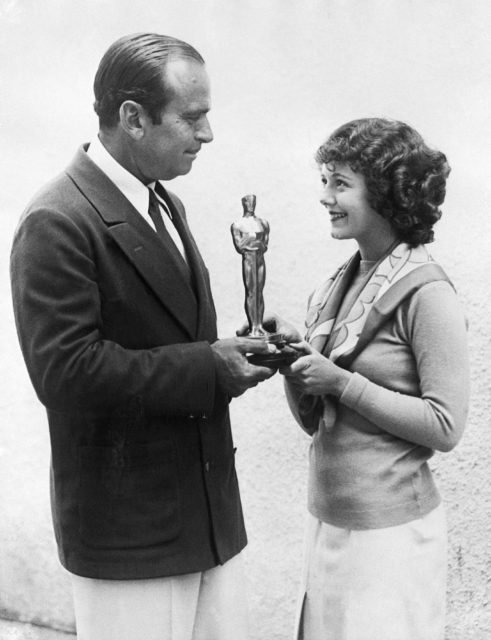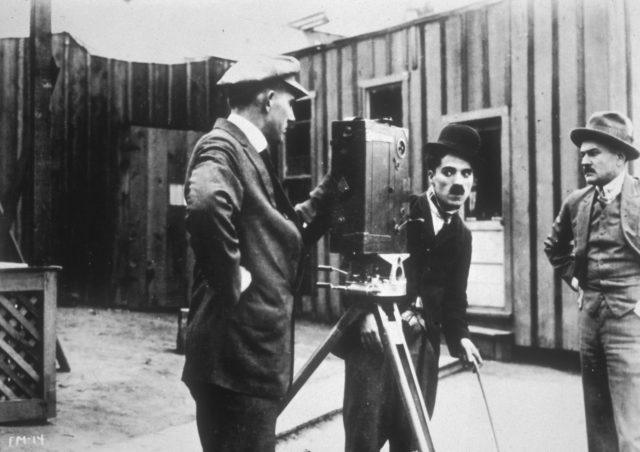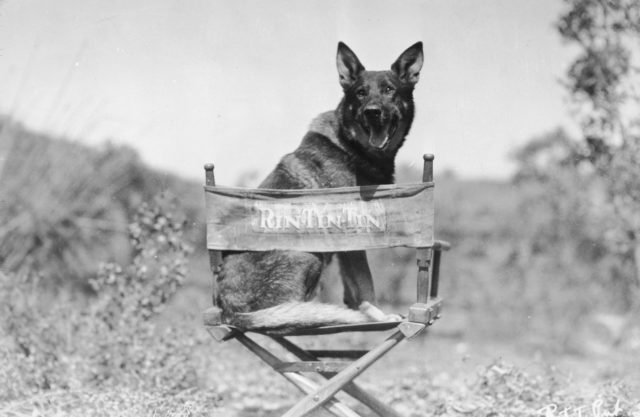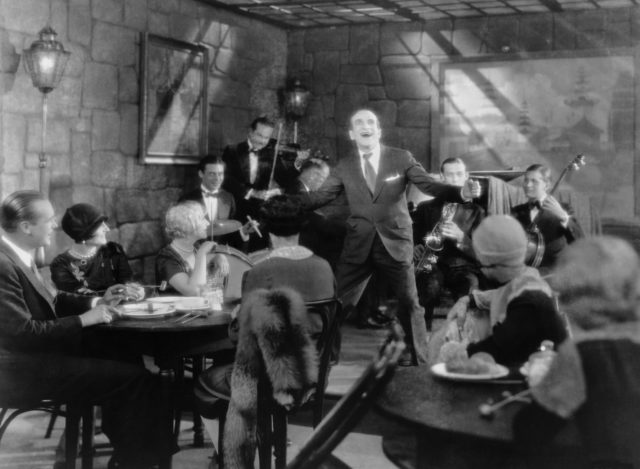The very first Academy Award ceremony was held in 1929 and was vastly different than today’s televised and live-streamed event. At first, the ceremony was a private affair, and it didn’t garner much attention from the media or the public. Today, the Oscars are one of the most anticipated and watched events in Hollywood. Here are six facts that prove how far the Academy Awards have come since that first-ever ceremony.
The event was super small

In marked contrast to the Academy Awards productions that we see today, the first Academy Awards were quite small. The Blossom Room at the Hollywood Roosevelt Hotel was rented out for the occasion, making it seem more like a reception than a gala awards ceremony. Only 270 people were in attendance that first night, some of whom had to pay $5 for a ticket to get in.
A dinner of broiled chicken, string beans, and potatoes was provided for guests, and there was time and space for dancing as well. The ceremony itself was very short and anti-climactic, largely because the winners of the awards had already been announced three months earlier. The event and the awards weren’t even referred to as Oscars yet. That name came later, in 1931.
The event received very little media attention, with only a small mention of the night covered in the newspaper. For the most part, the public didn’t really care about the ceremony. This is likely because they already knew who was going to win for each category. Following the first awards, actress Mary Pickford suggested that the Academy work harder to garner media attention. The following year, they withheld the names of the winners until the night before to try and build some suspense.
The short ceremony still had a host

One thing that remains the same today (for the most part) is that the ceremony was emceed by a host. There have been a few instances in history where the Academy Awards went on without a host, including the 1948, 1969, 1970, 1970, 1989, 2020, and 2021 ceremonies. However, the first Academy Awards found a very suitable host in actor Douglas Fairbanks Sr.
The whole ceremony only lasted a short 15 minutes, so not a lot of talking was expected from the silent film star. Along with his acting credentials, Fairbanks co-founded and served as the first President of the Academy of Motion Pictures and Sciences (AMPAS). He played a large in many things related to acting, such as serving as co-founder of the United Artists movie studios and helping to found the School of Cinematic Arts at the University of Southern California.
There were only 12 categories

Today, the Oscars have a total of 23 categories. However, at the first Academy Awards, that list was almost halved, with only 12 categories of awards. The list included Best Actor, Best Actress, Best Art Direction, Best Cinematography, Best Directing (Comedy), Best Directing (Drama), Best Engineering Effects, Outstanding Picture, Unique and Artistic Picture, Best Writing (Adaptation), Best Writing (Original Story), Best Writing (Title Writing), and a final category called the Special Award.
Two categories, Outstanding Picture and Unique and Artistic Picture, were essentially the same thing but served two different purposes. The 1929 Outstanding Picture award was given to Wings, a silent film that focuses on First World War pilots. This film was considered very patriotic and morally upright, and giving it the award helped to push the idea that Hollywood could also be patriotic and morally upright. The 1929 Unique and Artistic Picture award was given to Sunrise, which was a 1927 film that was far more artistic and better fit the “art” narrative of the Academy’s mission.
One category has only been included once

Oscars fans may have noticed that the 12 categories of the first Academy Awards included three writing categories: Adaptation, Original Story, and Title Writing. This third category was necessary for the first Awards ceremony as it was held right at the tail end of the silent film era. Almost all of the awards given out that year were presented to silent film associates.
Silent movies required title cards to be written and inserted into the film, a task that earned its own award category. However, silent films had become nearly extinct by 1930, replaced by “talkies,” causing this category to appear just once, with only one winner. The sole award for Best Writing (Title Writing) was given to Joseph Farnham. Many felt that he was not necessarily the best candidate for the award, but it was most likely presented because he was one of the founding members of the Academy.
There’s a legend that the rightful first winner of Best Actor was a dog

According to popular legend, one of the categories that had some issues at the first Academy Awards was Best Actor. Allegedly, as officials tallied the votes they realized that a German Shepherd dog had won the most. The hugely popular dog, named Rin Tin Tin, had starred in A Dog of the Regiment and Jaws of Steel. Embarrassed by the discovery, officials chose to skew the results, giving the Best Actor award to human actor Emil Jennings instead.
As it turns out, this is not what really happened, but the Academy probably wishes it had. Selecting Jennings to win ended up being quite a problem for Academy officials. He was a silent film actor who had a reputation for being moody on set. The German native had a very thick accent, and when talkies replaced the silents, he could no longer find any work in Hollywood. Returning to Germany, Jennings took on roles given to him by the rising German party of the Second World War, starring in propaganda films and campaigning for their success.
The Academy Awards probably wished they hadn’t given the first-ever Best Actor award to Jennings and instead let the dog have it. Jennings survived the war, but his support for the German party ultimately destroyed his reputation.
Only one acceptance speech was given

These days, acceptance speeches are expected from those who win their category awards. Acceptance speeches have increasingly taken up a large portion of the Oscars ceremonies over the years. The longest recorded acceptance speech was almost six minutes long and was given by Greer Garson, who won the award for Best Actress in 1942. The shortest, just two words, “Thank you!”, was given by Patty Duke after winning for Best Supporting Actress in 1963.
Acceptance speeches were not always an integral part of the Academy Awards. In fact, the first awards ceremony only had one acceptance speech given during the short 15-minute ceremony. For the most part, winners simply walked on stage, grabbed their awards, and went back to their seats. Again, this is likely because the winners had been announced three months prior.
More from us: The Shocking Opening Performance That Nearly Ruined the Academy Awards
The one and only acceptance speech given at this ceremony was by producer Darryl F. Zanuck. He accepted the Special Award for The Jazz Singer, the first-ever talkie film. Zanuck took advantage of the podium to speak a few words about the film’s production team. During his speech, he noted how the film “revolutionized the industry,” and he wasn’t wrong. Talkies quickly took over the industry the following year.
